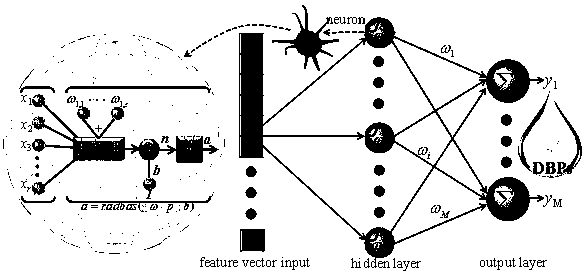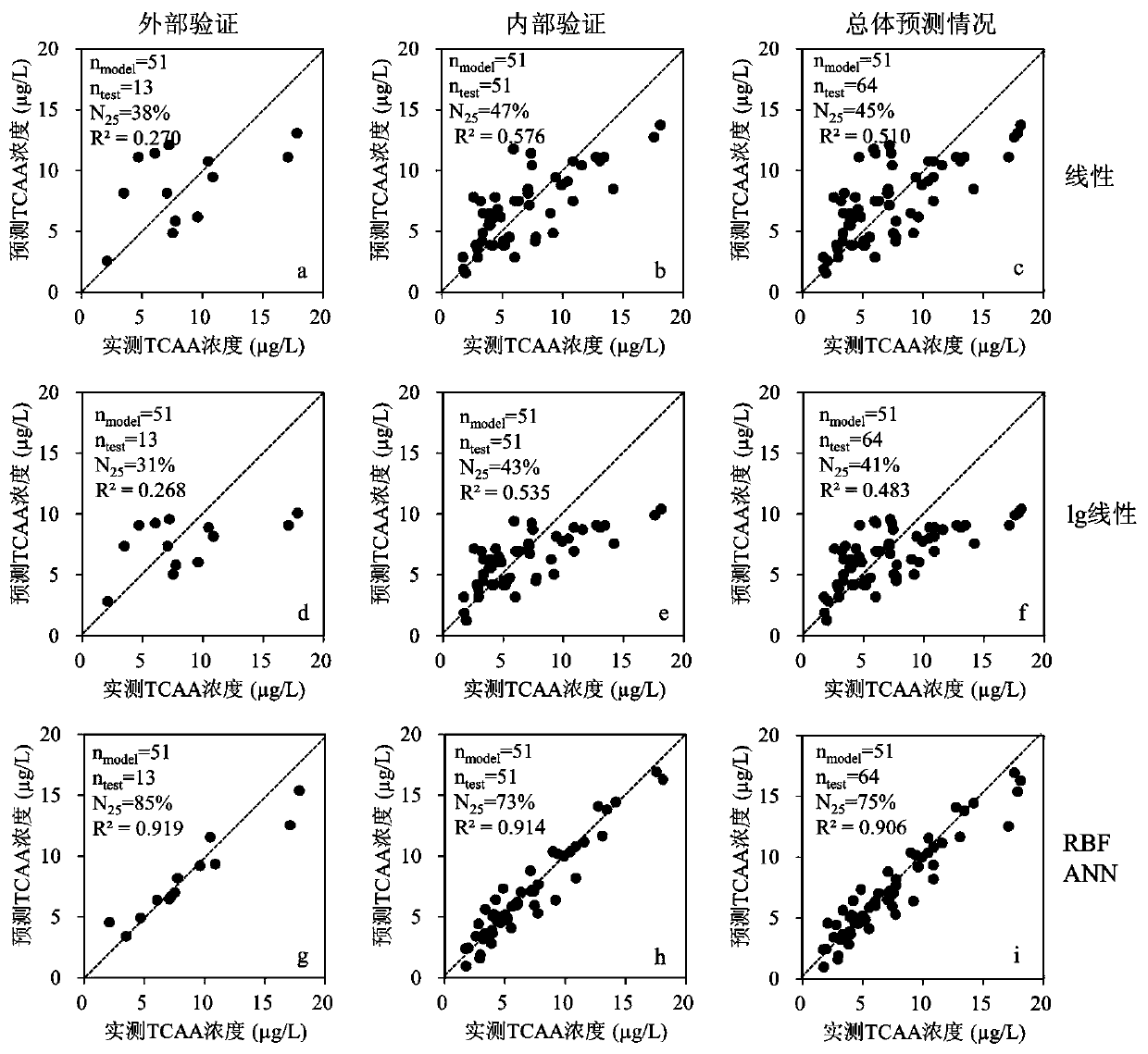Method for predicting concentration of disinfection by-product haloacetic acid in water supply system
A technology for disinfection by-products and water supply systems, which is applied in the direction of testing organic pollutants in water, general water supply saving, prediction, etc., and can solve the problems of long training time, prediction accuracy of only 47.2%, and slow convergence speed.
- Summary
- Abstract
- Description
- Claims
- Application Information
AI Technical Summary
Problems solved by technology
Method used
Image
Examples
Embodiment Construction
[0027] 1. Establish HAAs and water quality parameter database (see Table 1)
[0028] (1) Water sample collection: Select the water supply in a specific area. When sampling, first turn on the tap for 3-5 minutes until the temperature is stable and the water flow is clear. The sampled water is used for ①HAAs analysis; ②Measurement of various water quality indicators; collection Immediately put the water sample in the refrigerator and transport it back to the laboratory;
[0029] (2) Determination of water quality indicators: pH (pH meter, on-site measurement), Temp (thermometer, on-site measurement), dissolved organic carbon (TOC analyzer), UV 254 (Ultraviolet spectrophotometer method), ammonia nitrogen is determined by Nessler's reagent colorimetric method, nitrous nitrogen is determined by N-(1-naphthyl)-ethylenediamine dihydrochloride colorimetric method, Br - Determination by ion chromatography, residual chlorine (determination by N,N-diethyl-p-phenylenediamine (DPD) spectr...
PUM
 Login to View More
Login to View More Abstract
Description
Claims
Application Information
 Login to View More
Login to View More - R&D
- Intellectual Property
- Life Sciences
- Materials
- Tech Scout
- Unparalleled Data Quality
- Higher Quality Content
- 60% Fewer Hallucinations
Browse by: Latest US Patents, China's latest patents, Technical Efficacy Thesaurus, Application Domain, Technology Topic, Popular Technical Reports.
© 2025 PatSnap. All rights reserved.Legal|Privacy policy|Modern Slavery Act Transparency Statement|Sitemap|About US| Contact US: help@patsnap.com



